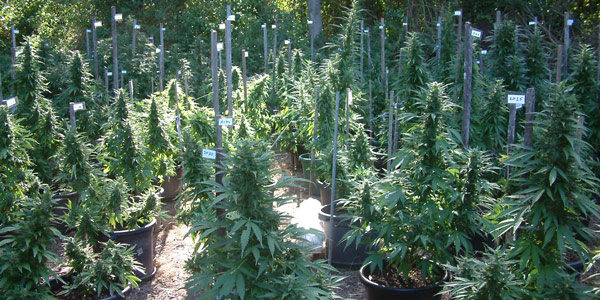By Jason Fordney
BOISE, Idaho —The budding efforts to make U.S. marijuana operations more energy efficient will become increasingly critical as the commodity grows into a global market, energy industry experts — including one state utility commissioner — said Monday.
“Cannabis is already a $10 billion industry and is becoming a global marketplace,” Derek Smith, founder and executive director of the Resource Innovation Institute, said Monday at the annual meeting of the Western Conference of Public Service Commissioners (WCPSC). The Portland, Ore.-based non-profit works with utilities and growers to improve energy efficiency and develop standards.
With extensive lighting and HVAC requirements, the marijuana industry currently represents about 1% of electricity demand in the United States. Growing facilities that are not energy efficient can have up to eight times the energy impact of regular buildings.
“The energy impacts are really all over the board, they are broad, and they are pretty large … it is something to keep track of,” Smith said.
Cannabis cultivation is one of the most rapidly changing markets in the world, emerging from the shadows of what was formerly a black market. Growers tend not to trust utilities and the government, he said, as pot is still illegal at the federal level. But a “LEED for weed” certification will eventually be developed, according to Smith.
Marijuana has been legal since 2012 in Washington State, where it is now the third largest agricultural commodity after apples and milk, Washington Utilities and Transportation Commission Chairman Dave Danner said. Sales in the state were $1.4 billion last year, yielding tax revenues of about $312 million.
“It has had quite an impact in our state,” Danner said. “It has required our utilities to take a specific interest in it, and for that reason we are interested in it as well.” Industry participants have expressed concern about the longevity of pot-growing operations, raising the question of whether utilities could end up investing in assets that will later be abandoned, such as substations or feeder lines.
“What we are seeing now is that these companies are pretty stable,” Danner said. “It is going pretty well.”
Another concern: that growing and possessing marijuana is still illegal at the federal level, raising the question of whether the operations might be raided and shut down. Attorney General Jeff Sessions has stated publicly his desire to go after the industry, but so far that has not happened.
State and utility officials have questions about how to extend state energy efficiency programs to marijuana growers in this environment, but many efficiencies could be captured in lighting and HVAC, Danner said. Avista Utilities and Puget Sound Energy have developed incentives and rebates for growers to adopt more efficient lighting, he said. Advanced metering infrastructure will also make it easier to identify illegal growing operations, which still proliferate and use a lot of energy, he said.
“There is also still, in all of your states and mine, an illegal marijuana industry,” Danner told fellow commissioners.
At a separate panel discussion, Linda Gervais, Avista Utilities senior manager of regulatory policy, said dealing with pot growers was something “we didn’t see coming.” Even large growers get paid in cash and don’t bank in traditional ways because of federal illegality. Large growers can have monthly bills of $30,000 to $40,000, and one grower brought his payment in to the utility’s office in plastic garbage bags. The utility has had to buy a cash counter, hire a security guard and hire an armored truck to haul the money.
“It has been a challenge, but I think we have a really good process in place now because we learned how to adapt,” said Gervais.



